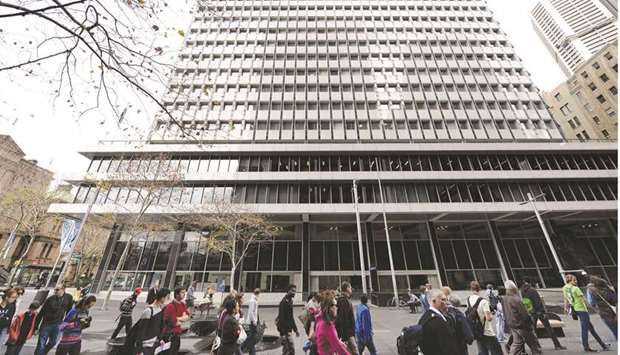Bond traders keep probing the limits of central banks’ patience, and nowhere is that clearer than in Australia, where policymakers are struggling to defend their yield target.
The Reserve Bank of Australia bought A$5bn ($4bn) of bonds on Thursday, matching the record last March when it began quantitative easing.
That eventually brought the targeted three-year yield down, but only after it hit a two-month high. A selloff that began in New Zealand also widened to Treasuries and Japanese debt, as the world’s sovereign bonds head for their worst month since April 2018.
“The Australian bond market is in many ways caught in the crossfire of what’s happening in US Treasuries,” said Chamath De Silva, a portfolio manager at BetaShares Holdings in Sydney and a former fixed-income trader at the central bank. “I don’t see it as the market deliberately testing the RBA so much as global central bank dovishness in general.”
A $9tn rescue mission by central banks to haul the global economy out of its coronavirus recession is being tested by inflation bets that are threatening their ability to keep borrowing costs down. The intensifying bond rout is forcing a rising tally of money managers to scale back market exposures while Wall Street strategists pare back their bullish playbooks.
Australia’s 10-year yield closed at its highest since 2019, having surged more than 75 basis points this year. The benchmark Treasury yield has hit 1.4%, and is headed for the steepest monthly advance since the November 2016 bond rout set off by President Donald Trump’s election win.
Yields in every major market have jumped. Policymakers are trying to push back against the rising tide of yields, from Fed speakers stressing they will look through short-term inflation spikes to European Central Bank President Christine Lagarde “closely monitoring” government debt yields.
The Bank of Korea warned it’ll intervene in the market if borrowing costs jump and the Reserve Bank of India is deploying a range of tools in the face of a market revolt.
That’s not enough to stop the growing challenge from bond traders, who are pushing the limits of central banks’ patience while debt auctions are starting to struggle. Investment firms including BlackRock Inc’s research arm and Aberdeen Standard Investments are retreating from government bonds.
In Australia, scepticism has grown that the RBA will maintain its guidance to keep borrowing costs steady into 2024. That’s been highlighted by the unravelling of a popular trade based on selling April 2024 bonds and buying November 2024 notes in anticipation that the central bank’s target will shift to the later maturity debt.
Australia’s rapid economic recovery has emboldened traders, as the country suppresses Covid-19 and massive stimulus encourages households to spend and firms to hire. A further boost has come from the price of iron ore, Australia’s largest export, which crashed through $170 a ton and is closing in on a record.
“The RBA is pulling out the stops to counter a rise in bond yields, which have been swept up in a global updraft. In a surprisingly forceful move, it announced its largest purchase of Australian government bonds since it began the programme in March”, says James McIntyre, Bloomberg economist.
Yet, there is wide disconnect with policy makers expectations.
RBA Governor Philip Lowe does not anticipate any rapid recovery in inflation. He noted that before the pandemic, when unemployment had a 4 in front of it, it still failed to generate the sort of wage gains that would be needed to return CPI sustainably to the 2-3% target. Australia’s most recent annual inflation reading was just 0.9% and the jobless rate stands at 6.4%.
The central bank is expected to keep policy settings unchanged when it meets on Tuesday.
New Zealand bonds kicked off the rout in Asia on Thursday after the government announced it will require the central bank to take account of house prices when it sets interest rates. The losses accelerated as the bid-to-cover ratio at an auction dropped to the lowest since 2012.
Money markets are now pricing in a rate increase in New Zealand for mid-2022, suggesting it could be the first major central bank to hike.
Yields on the 10-year benchmark surged 18 basis points – the largest move since April – to 1.87%. Japanese bonds were also sold, with the benchmark 10-year yield rising to the highest since 2018, while the yield curve steepened.
“As yields look set to still rise gradually, this isn’t an environment where investors want to buy even if levels are attractive enough,” said Naomi Muguruma, senior market economist at Mitsubishi UFJ Morgan Stanley Securities Company.

Pedestrians walk past the Reserve Bank of Australia headquarters in the central business district of Sydney. The RBA bought $4bn of bonds, matching the record last March when it began quantitative easing.


